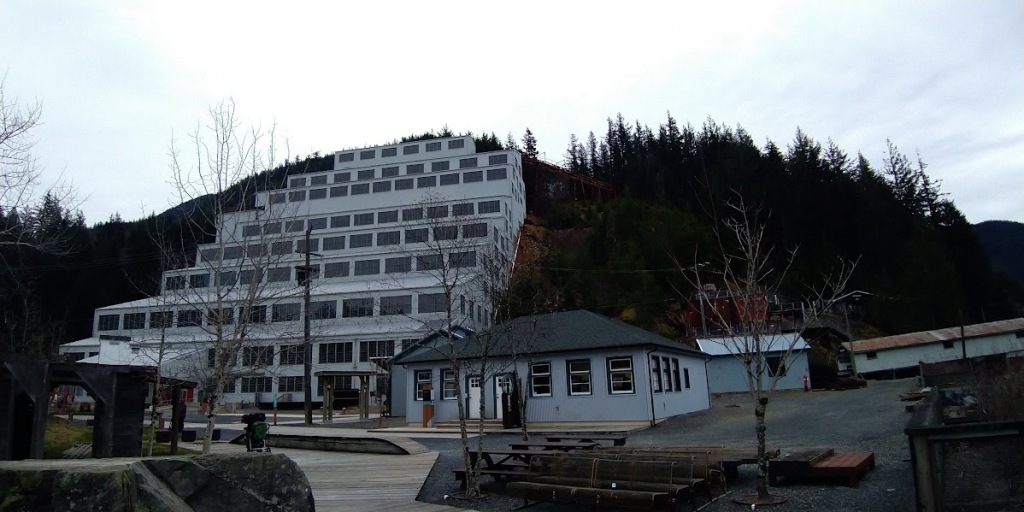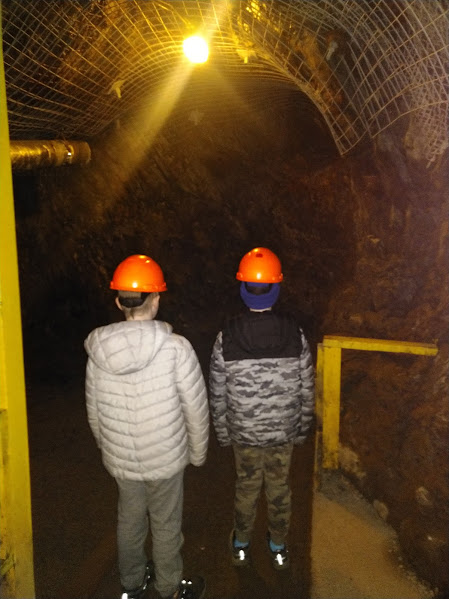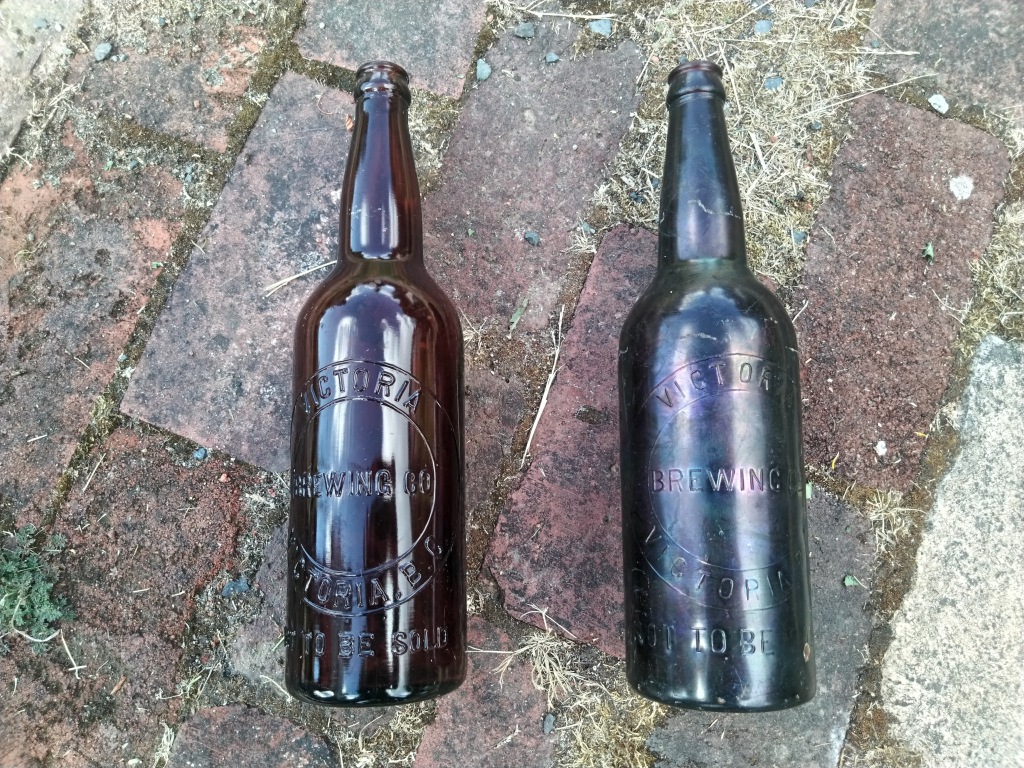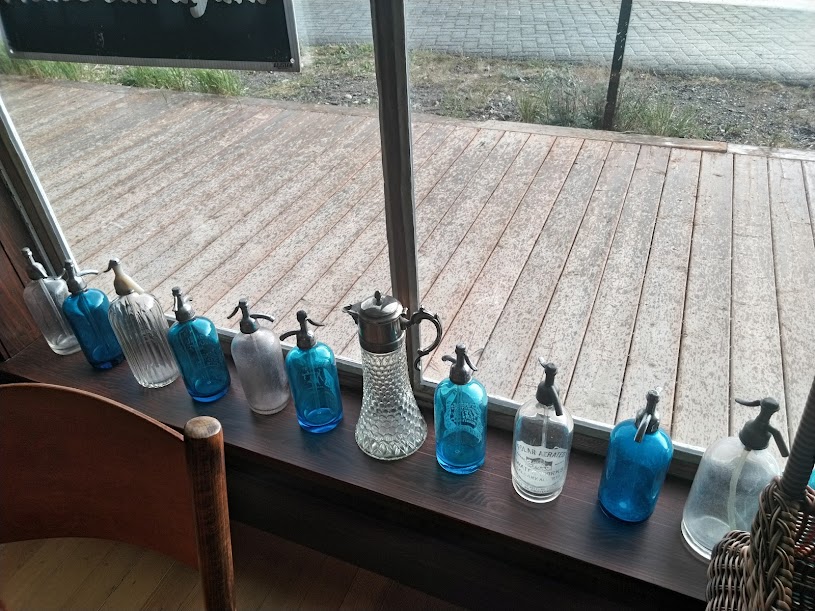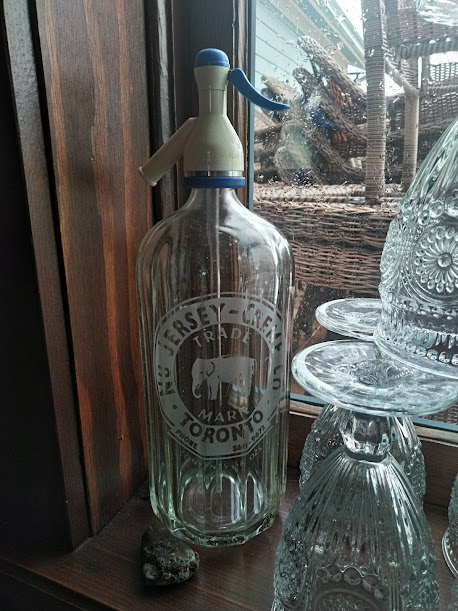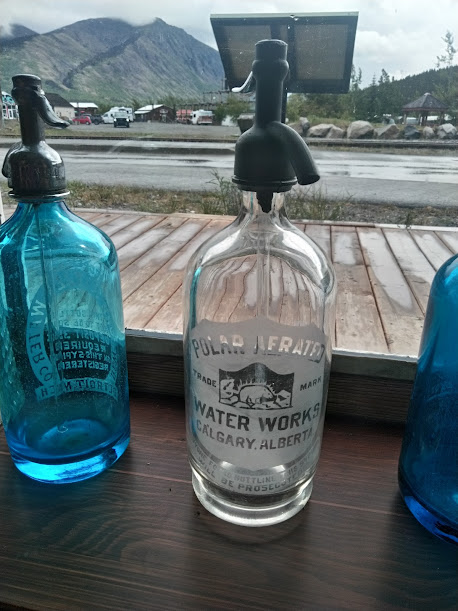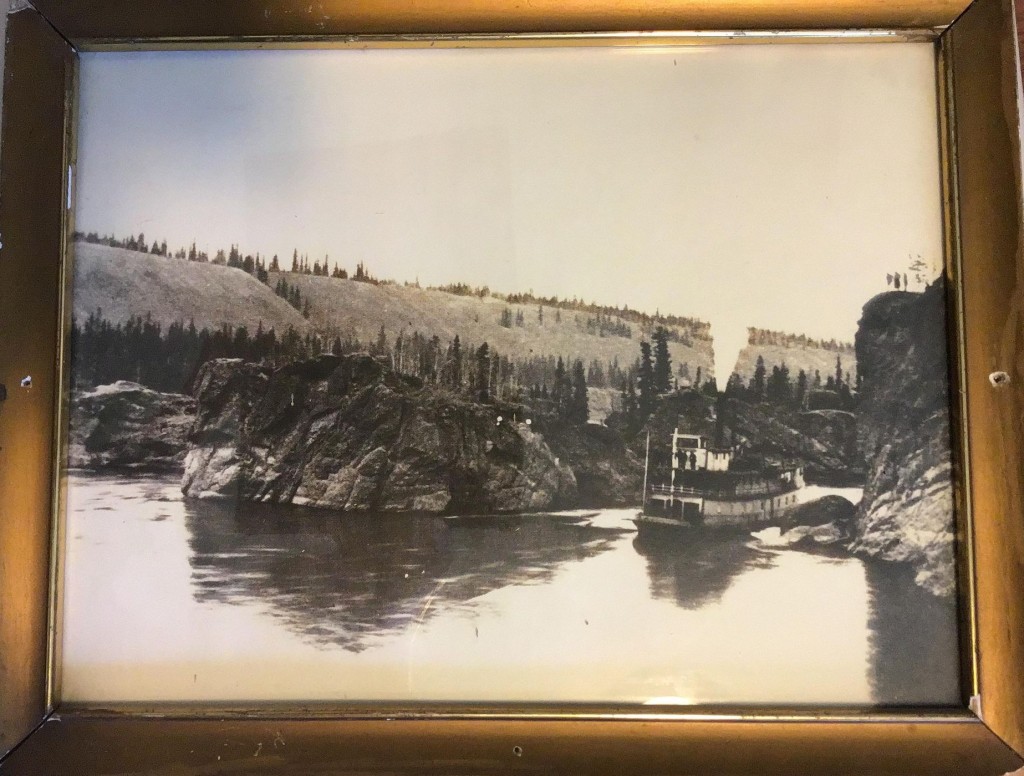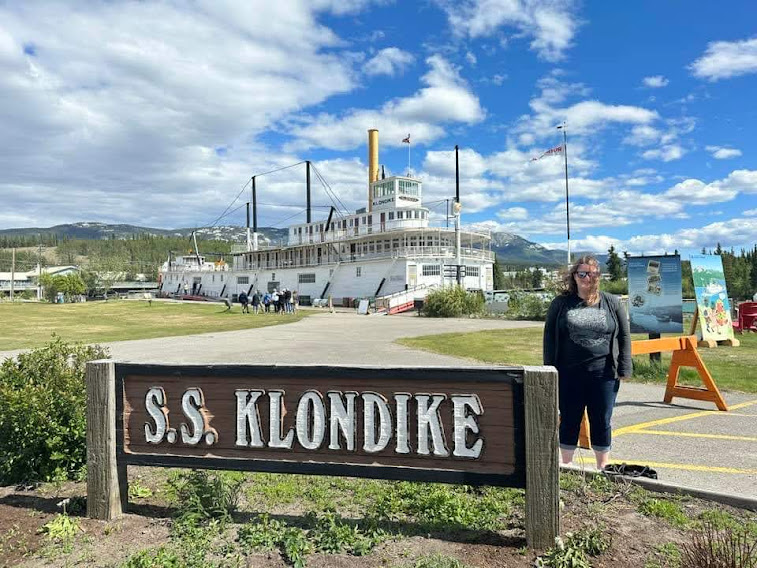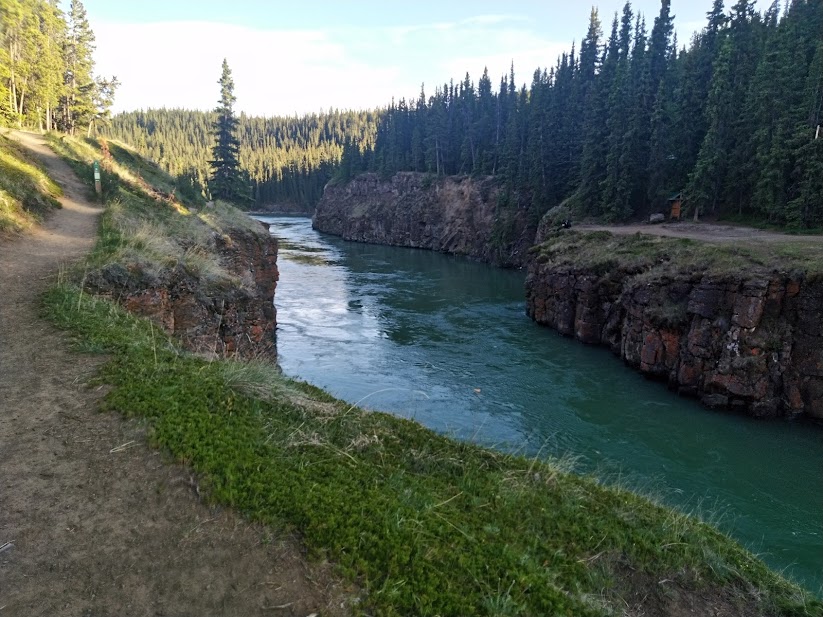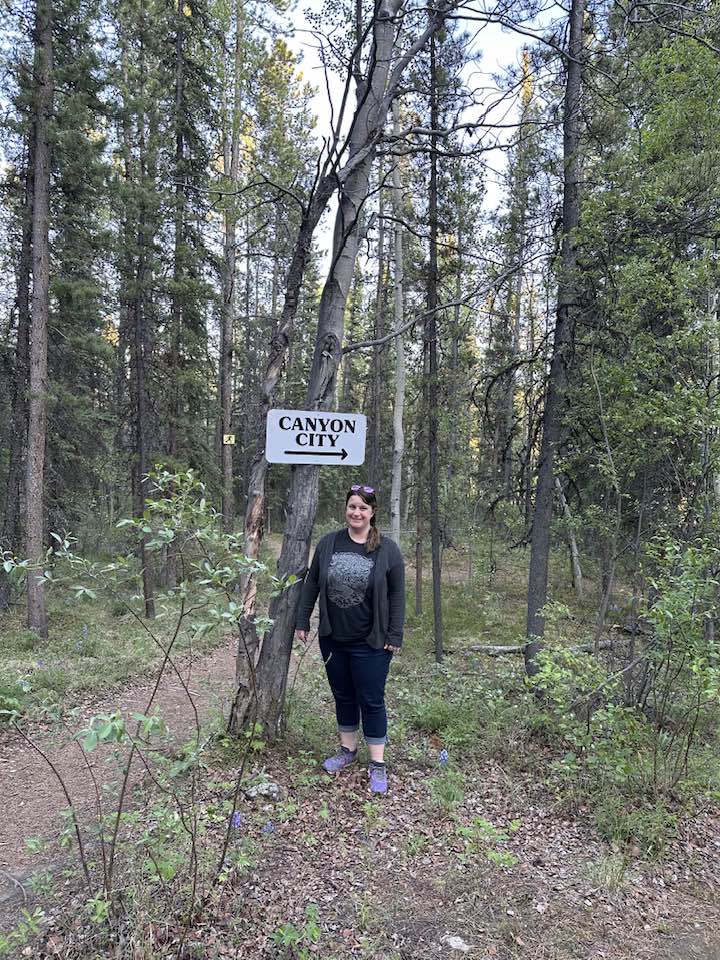While on my trip north, and particularly while visiting the Dawson City Museum, I kept an eye out for soda bottles, and I was not disappointed. At the museum there was a nice collection of siphons and Hutchinson bottles from the Eldorado Bottling Company and Hutchinson bottles from the Bonanza Bottling Company.
Back home again, I did a little reading about these companies, which were both located in Dawson City. Eldorado operated from about 1899 to about 1916. Bonanza was an earlier company about which little is recorded. In an article written with Julia Pike, bottle collector Phil Culhane suggests that it’s possible that the proprietor of Bonanza Bottling sold his bottling equipment to the proprietor of Eldorado Bottling.1 Given what I know of the soda industry in Nanaimo during the same time period, where equipment had to be imported from afar, it seems like a very plausible story.
Soda bottles in the Dawson City Museum collection
The Bonanza bottles are potentially quite unique because the embossing on some bottles of this type reads “Bonanza Bottle Co. / Dawson City, N.W.T.” Prior to 1898 when the Yukon Territory Act was passed, Dawson City in its early days sometimes was referred to as being in the “Northwest Territories.” “‘The Northwest Territories’ was a blanket term used to cover all ‘other land’ in western and northern Canada for much of the 19th century.”2 Culhane and Pike suggest that the bottles marked with “N.W.T.” were likely used, or at least ordered, prior to 1898. I didn’t know all of this at the time of my visit, and I can’t tell from the angles of my photos if the museum’s bottles have “N.W.T.” embossed on them or not, but it’s certainly interesting.
Another bottle tucked in the corner of a display case was a bit of an unexpected find for this Vancouver Islander – a quart-sized embossed beer bottle from the Victoria Brewing Company.
Victoria Brewing Company beer bottle in Dawson City
With light exposure over time, the originally colourless glass has changed to a lovely amethyst colour. I will say that the bottle was in a display case with a bunch of purple artifacts, so the effect might have been exaggerated somewhat by the adjacent items, but it sure didn’t look clear to me. It’s my understanding that glass which contains manganese is known to irradiate and discolour into various shades of purple over time.
The Victoria Brewing Company was founded in 1859, but the museum’s bottle is not as old as that. In 2020, construction workers digging a trench at Royal Roads University in Colwood found a similar Victoria Brewing Company bottle (although it was amber coloured) and it was dated to around 1910 or 1911, likely from when the stables were constructed at Hatley Castle.3
Victoria Brewing Company bottles from my dad’s collection
I’d seen Victoria Brewing Company bottles with this same embossing before, my dad has two amber ones in his collection. But I’d never seen one that was that lovely amethyst colour. It was fun to see a Vancouver Island bottle so far from home and to think about how it might have made its way to the Klondike.
While in Carcross, a sudden rain storm saw us heading into the bar of the historic Caribou Hotel to get out of the downpour. Once there, I was happy to discover a nice collection of soda siphons. Around the room I counted over 25 different bottles, all intact and all with tops (although I wondered if some of the tops might not be original to the bottles). Most of them were were either clear or various shades of aqua or blue glass, but there were also a few nice green ones. Many of them seemed to be from New York state, particularly from Long Island. But there were also three Canadian bottles – one each from the Nu Jersey-Crème Company of Toronto; the Eskimo Bottle Works of Montreal; and the Polar Aerated Water Works of Calgary. It was hard to take nice pictures, as many of the bottles were set up on window ledges, but I thoroughly enjoyed looking at all the different labels, many of which had been acid etched. What a great collection!
Notes
- Phil Culhane and Julia Pike, “Yukon Gold!! The Bottles of Canada’s North,” Canadian Bottle and Stoneware Collector, 8, no. 4 (2004): 51.
- Culhane and Pike, “Yukon Gold!!,” 49.
- “A sip of history,” Royal Roads University, October 7, 2020, https://www.royalroads.ca/news/sip-history.
